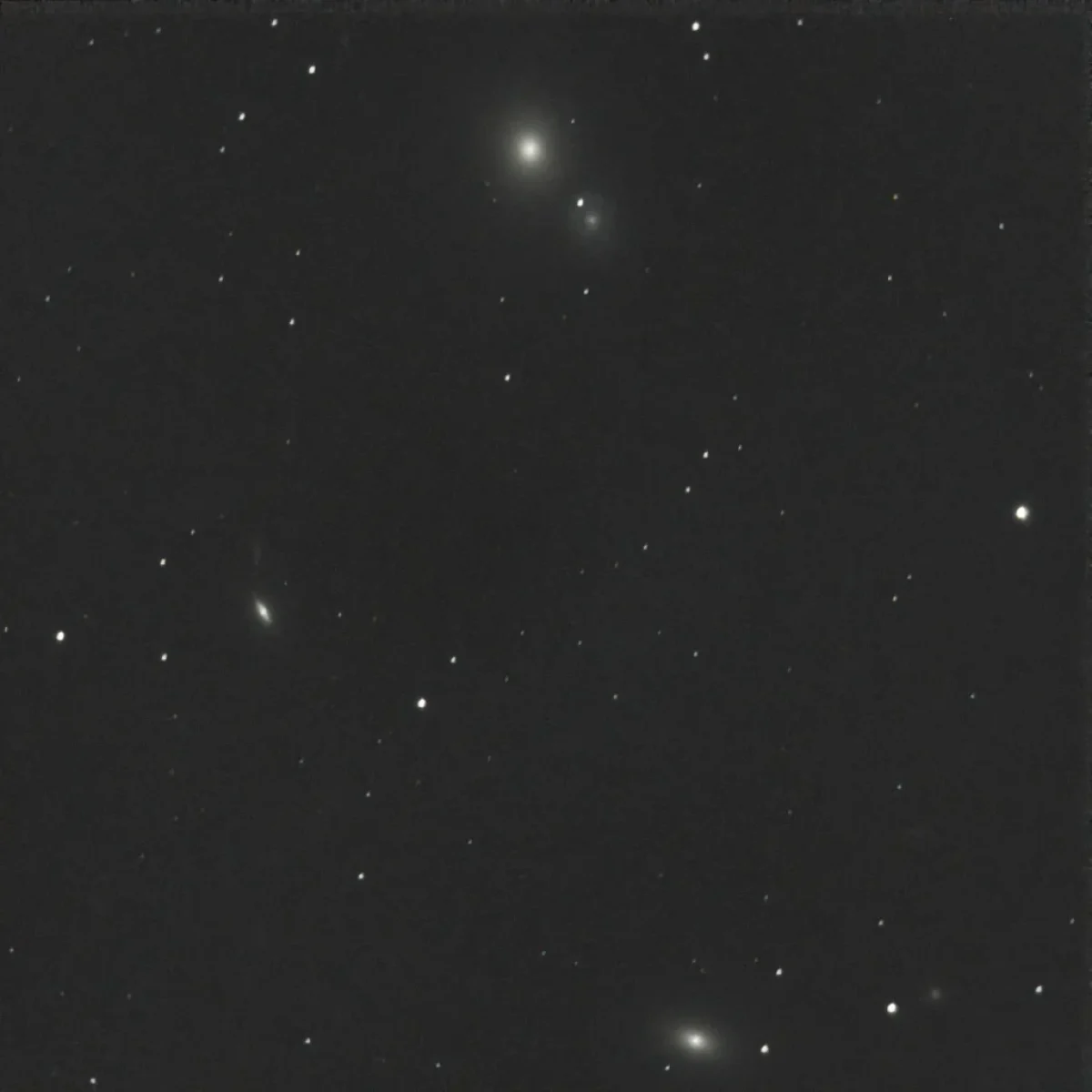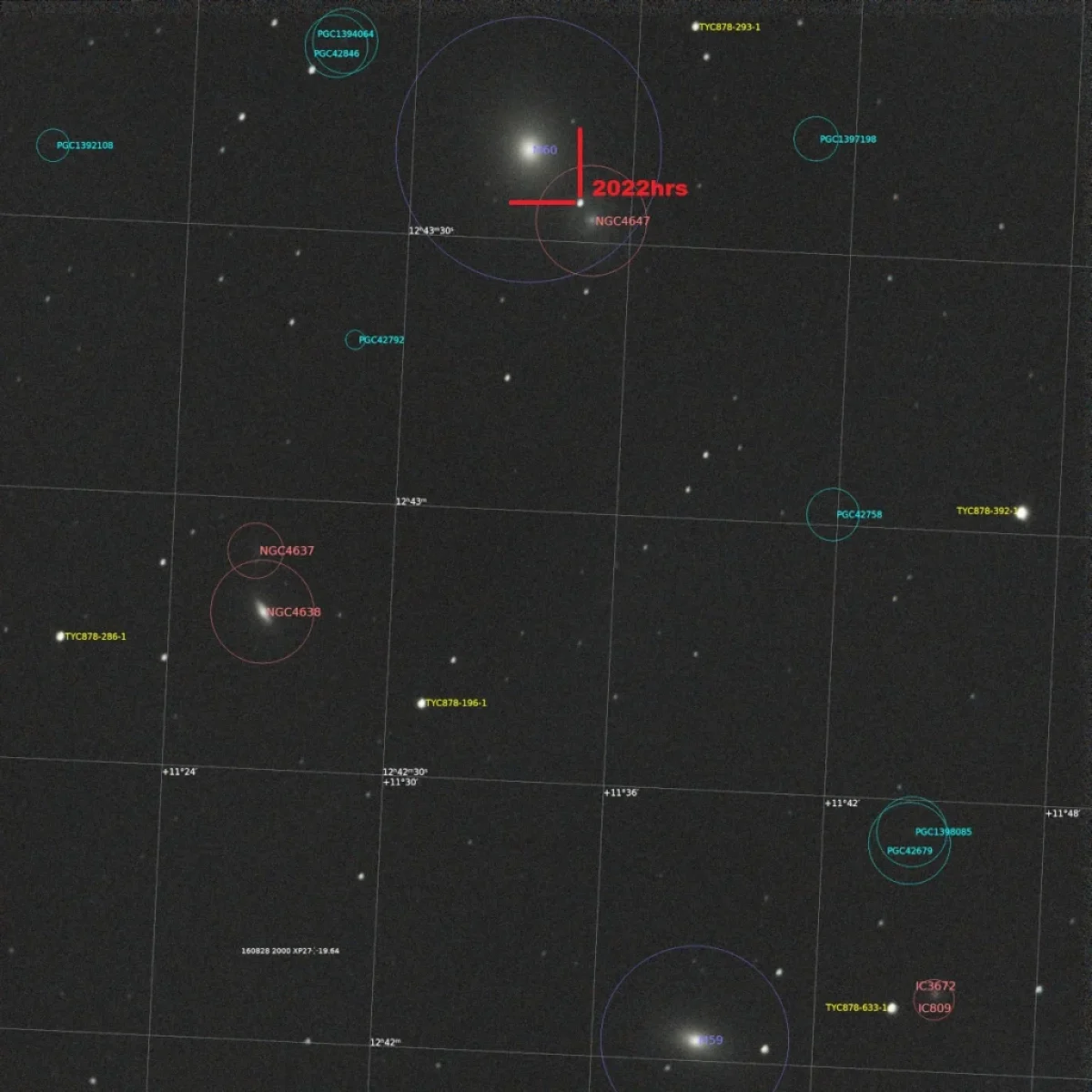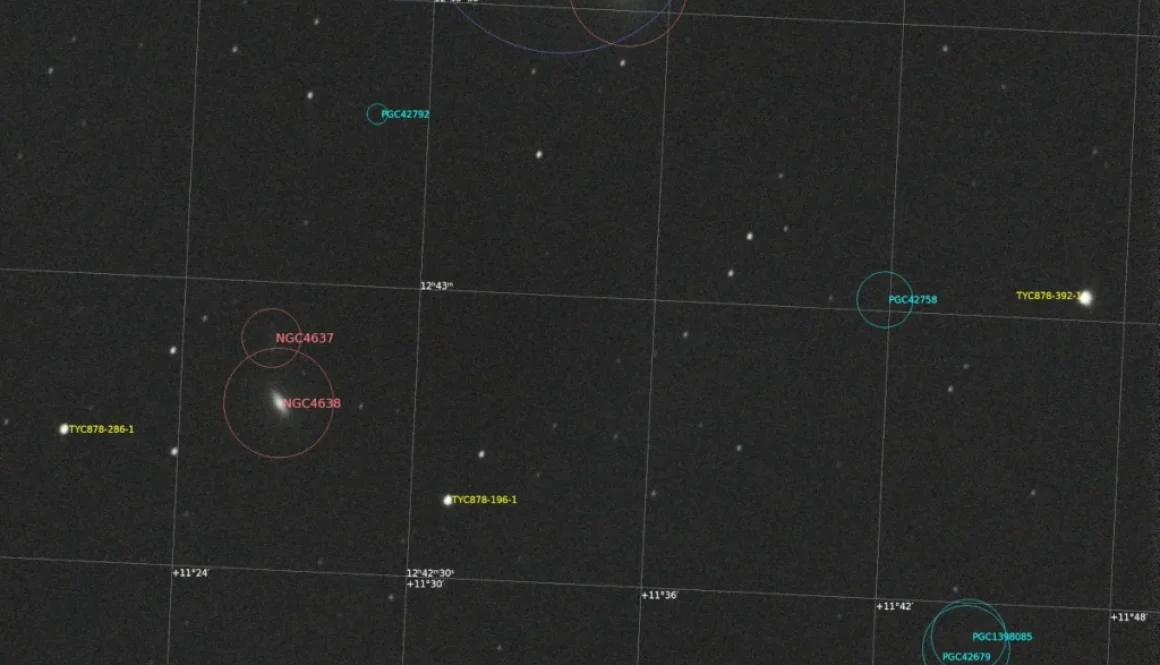My first supernova!
My first supernova!
On April 16, 2022 the Japanese astronomer Koichi Itagaki dicovered a supernova that exploded in the spiral galaxy NGC 4647 in Virgo.
My estimates at the time of writing (May 4th) is around magnitude +12.5, so well within the capacity of a backyard telescope.
I decided to plan an imaging session for this target as soon as I had a clear night. I had my chance on April 29, two weeks after the discovery. The galaxy would have been far enough from the light pollution sources on the eastern sky in my area around 10pm.
I told myself that I never imaged a supernova so far, so I decided to give a try … and I succeeded!
First, I started checking the weather forecast for my location with my favorite apps for Android (Clear Outside, Good To Stargaze and Astrospheric) and I found that I had good chances to enjoy two clear nights in a row on April 28 and 29 (with approximately 30 minutes of imaging time available each night, before the target galaxy disappears behind the buildings).
The imaging day for me was on the 29th. To be ready for the event, I set up an advanced imaging session with my astrophotography companion, NINA, which included several automated actions such as cooling the camera to -10°C, slewing and center the telescope to the target, perform an autofocus routine, start guiding, dithering every other frame and even notifying the imaging events in real-time via email during the imaging session, with a plugin named Ground Station. Note that in order to use the advanced sequencer you will need to install NINA latest version (Version 2.0 RC002 at the time of writing).
Before starting my imaging session, I carefully polar aligned my mount with a NINA plugin named “Three Point Polar Alignment”, which led me to an accuracy of about 1 arcminute (I retrieved this information from my PHD2 logs).
Last (but not least) I am also automatically tracking all my astrophotography imaging session with NINA and a plugin named GroundStation and Lightbucket. You can see my imaging sessions here.
Setup
Scope: Celestron 8 SCT
Focal Reducer / Corrector: Celestron 0.63x Focal Reducer / Corrector (203mm aperture and 1279mm focal length)
Mount: Celestron AVX mount
Imaging Camera: ZWO ASI533 MC PRO (cooled at -10°C)
Filters: Optolong L-Pro (light pollution filter)
Guiding camera: ZWO ASI224 MC with a IR Cut filter, PHD2
Guide Scope: Orion Deluxe Mini 50mm Guide Scope.
Software: NINA, PixInsight, Topaz Denoise AI. I also used PixInsight to annotate the image.
Total Integration Time: just 18 minutes (6x180s, dark, flat, bias)
NGC 4647 is a spiral galaxy with a +11.3 magnitude, and a distance of 63 million light yers. Supernova 2022hrs precise coordinates are RA 12h 43m 34.3s, Dec +11° 34’ 36”.
NGC 4647 is very close in the sky to the brighter and larger galaxy Messier 60 (their apparent separation is approximately 3 arcminutes).
This area is part of the Virgo Cluster of Galaxies. In my image I can easily count at least 7 of them: PGC1394064, M60 (the brightest one), NGC4647 (the galaxy containing the supernova S2022hrs), NGC4637, NGC4638, M59 (on the bottom of the image, also very bright) and finally IC3672 (bottom right). Think of billions and billions of stars!
Note: Scroll the slider to switch between the images with and without annotation.


